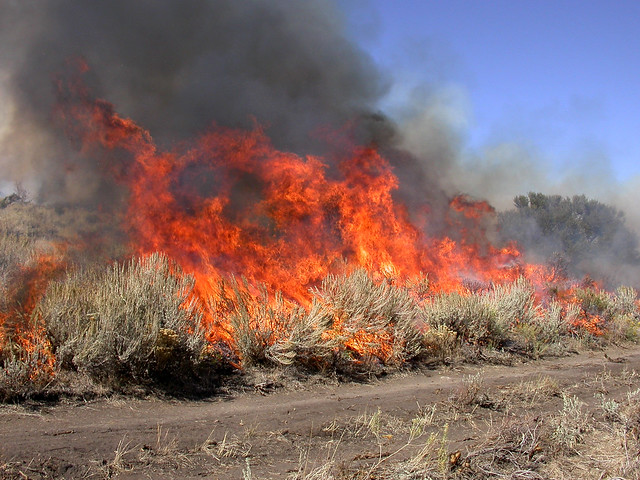
Cattle grazing on a nearly half mile wide targeted strip of cheatgrass near Beowawe, Nevada, created a firebreak that helped limit a rangeland fire to just 54 acres this past August compared to rangeland fires that more commonly race across thousands of acres of the Great Basin.
The same grazed fuel break held the Boulder Creek Fire in July 2018 to just 1,029 acres.
This “targeted grazing” firebreak and eight others are part of an evaluation project being managed by the Agricultural Research Service (ARS), partnering with other federal, state and local agencies and local cattle ranchers in Idaho, Nevada and Oregon. These demonstration sites are being studied so the concept’s efficacy and environmental impacts can be uniformly evaluated and compared.
“The basic idea is to use cattle grazing in the early spring to mow extensive strips of highly-flammable cheatgrass down to 2- to 3-inch stubble in strategic places to remove the fuel that can turn small rangeland fires into megafires in a matter of hours. These fuel breaks are intended to slow fire spread, make it less intense, and provides places from which firefighters can more safely attack and contain the fire,” explained ARS Rangeland Scientist Pat Clark with the Northwest Watershed Research Center in Boise, Idaho, who directs the project.
Clark is tracking how much fuel is reduced by targeted grazing, whether these fuel reductions can be maintained up to the start of the wildfire season, typically July 1 in the Great Basin, and what effects targeted grazing might have on environmental health such as changes in plant composition.
Cheatgrass is an invasive annual that dominates more than 100 million acres of the Great Basin in the western U.S. Germinating each winter, cheatgrass grows furiously in spring and dies in early summer, leaving the range carpeted in golden dry tinder.
The Great Basin now has the nation’s highest wildfire risk, and rangeland fires are outpacing forest fires when it comes to acreage destroyed.
“The most challenging part of the project is getting the targeted grazing treatment applied within the narrow and dynamic window when cheatgrass is palatable and sought out by grazing cattle,” Clark said.
The duration and timing of that palatability window changes every year, depending on temperatures and soil moisture. The logistics of getting cattle to the right place at the right time and keeping them there is challenging,” Clark added.
Part of the evaluation project is to look at the impact of targeted cattle grazing on environmental health as well as the effectiveness of the firebreak.


